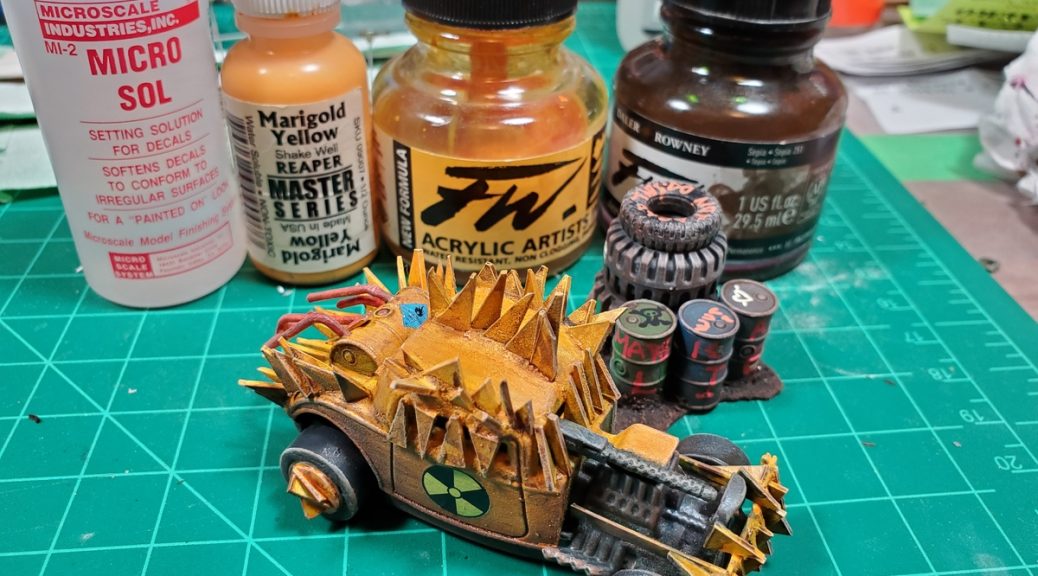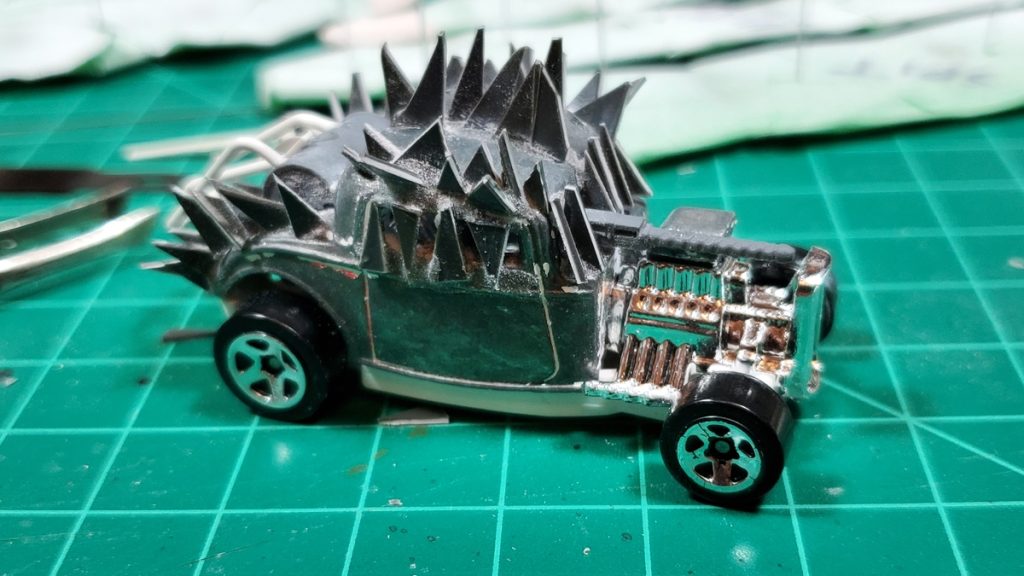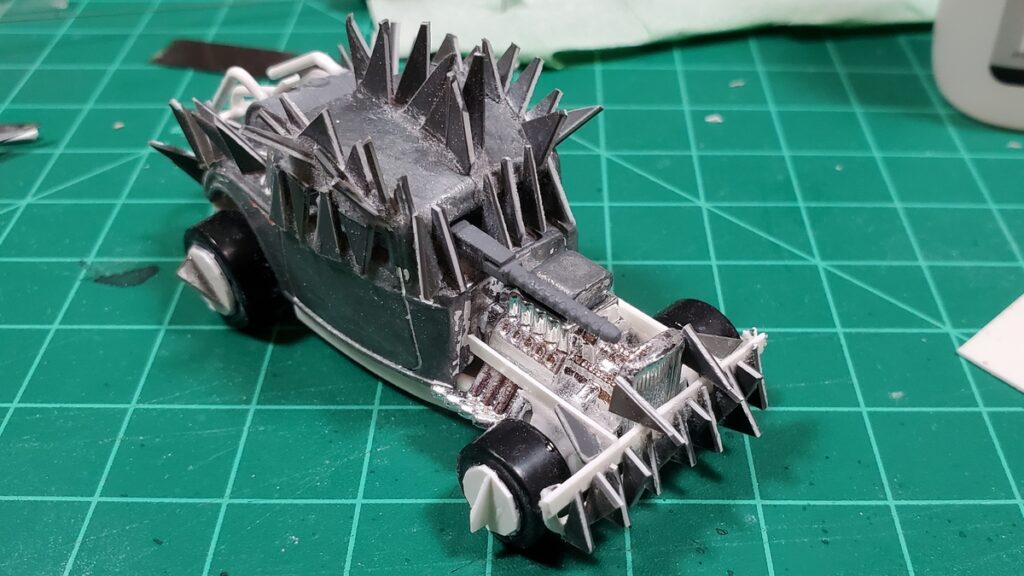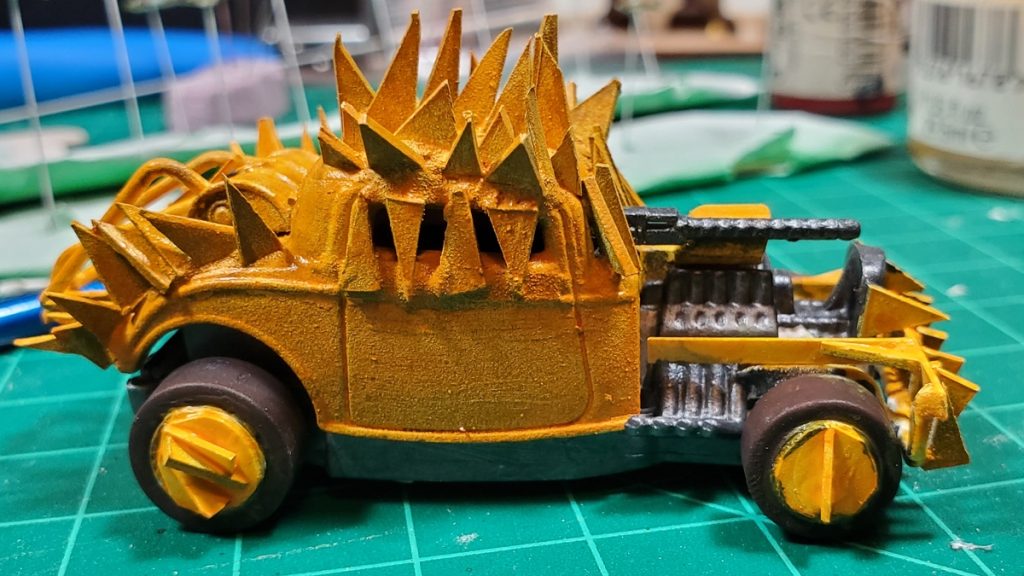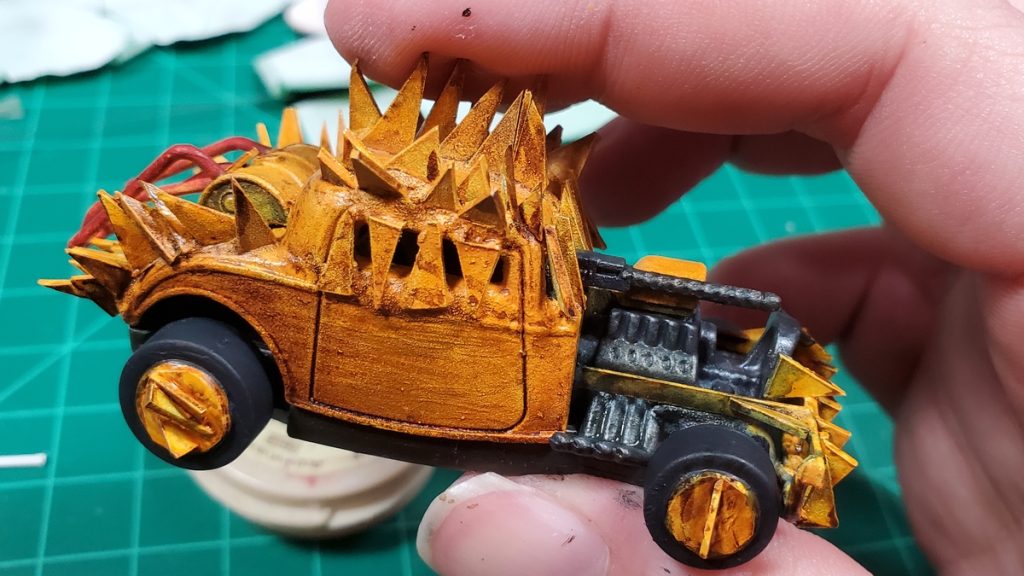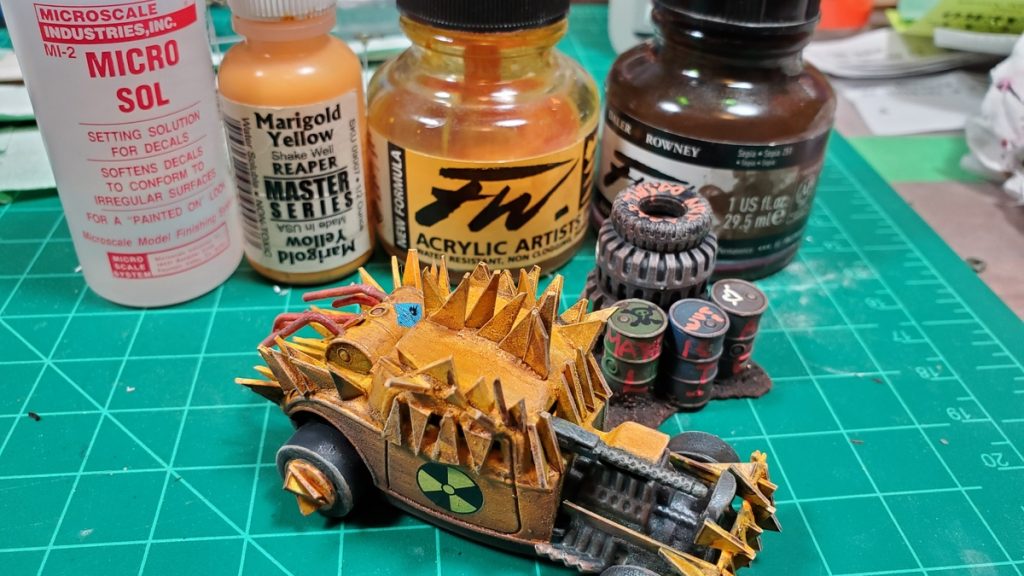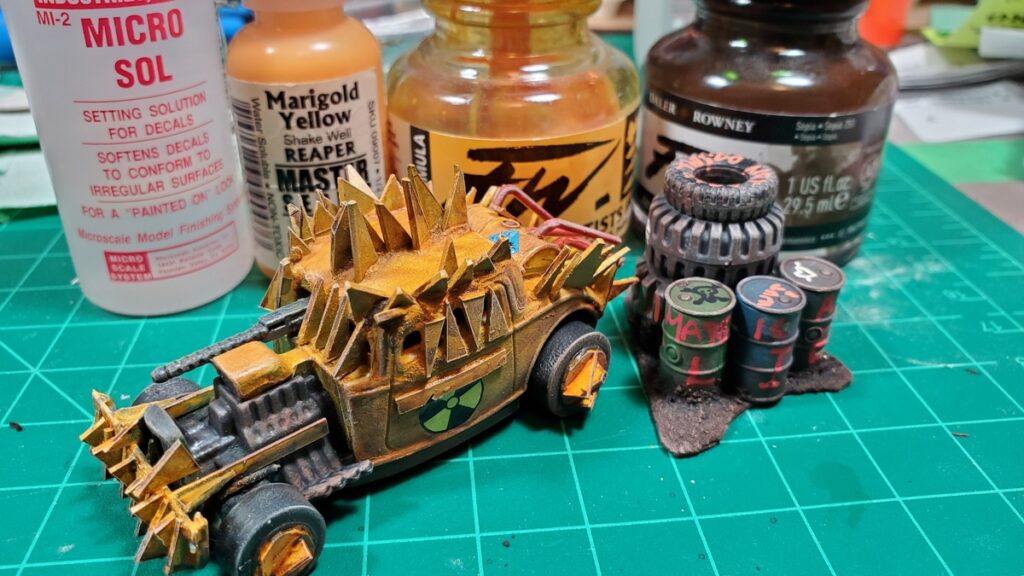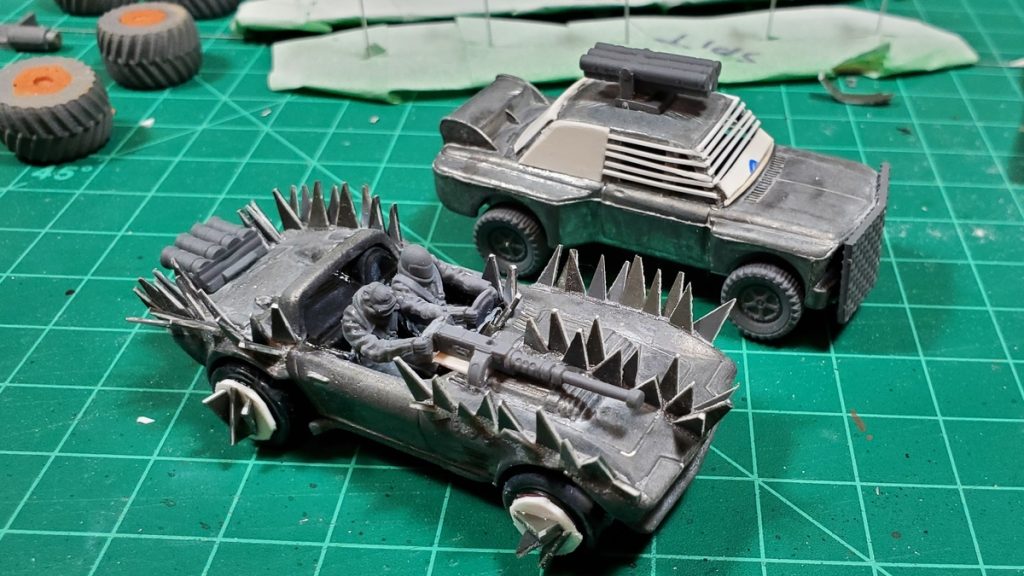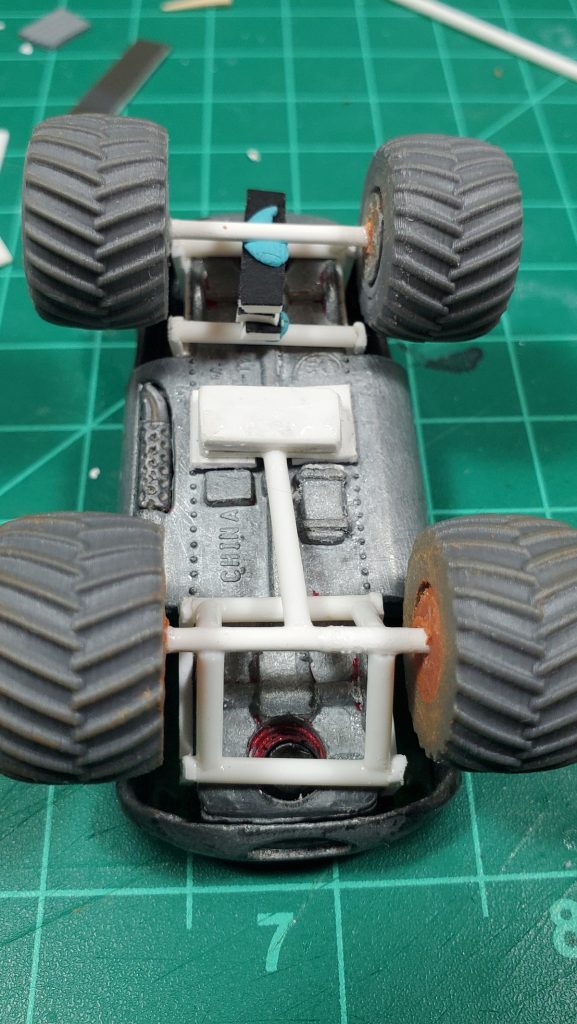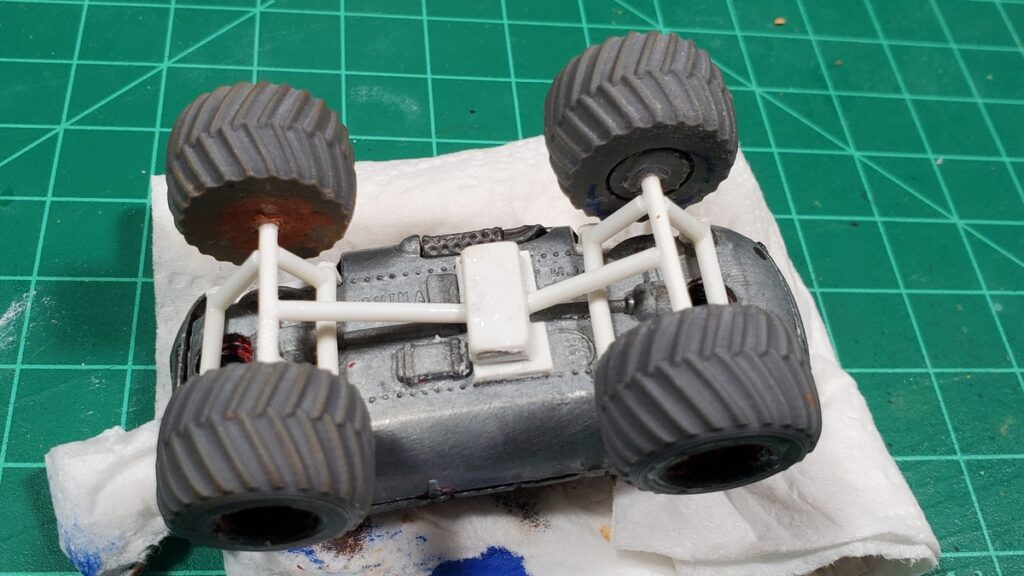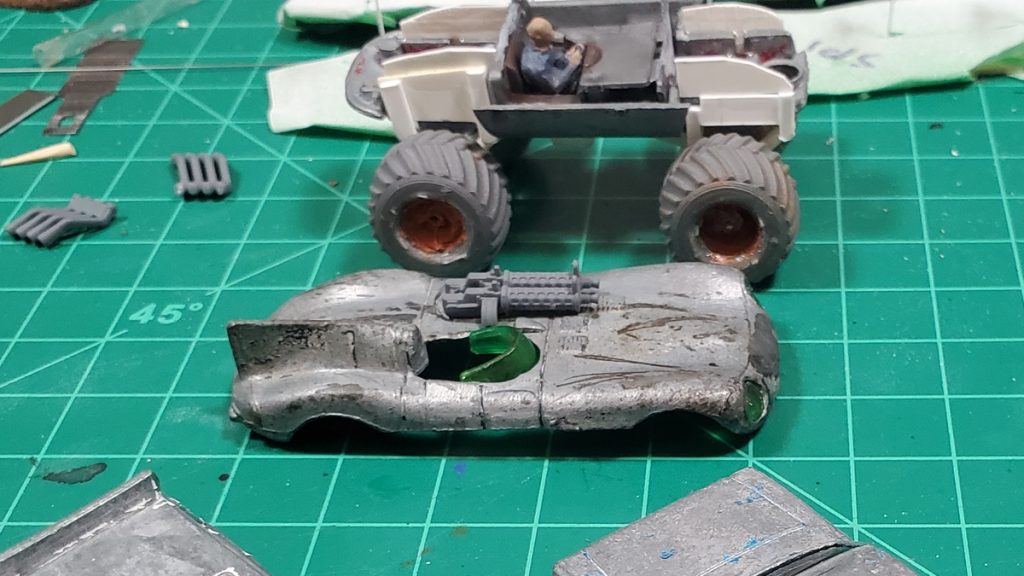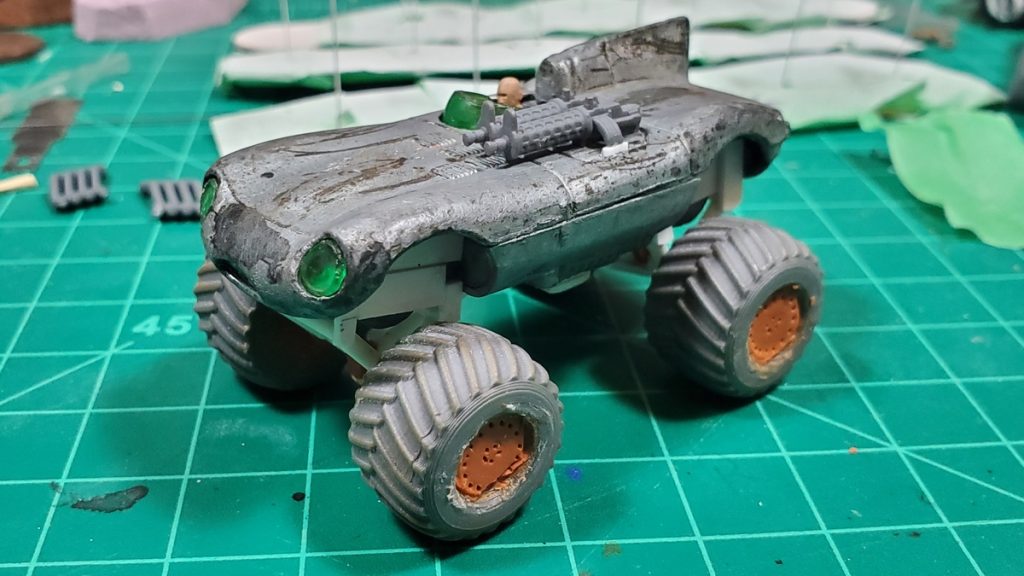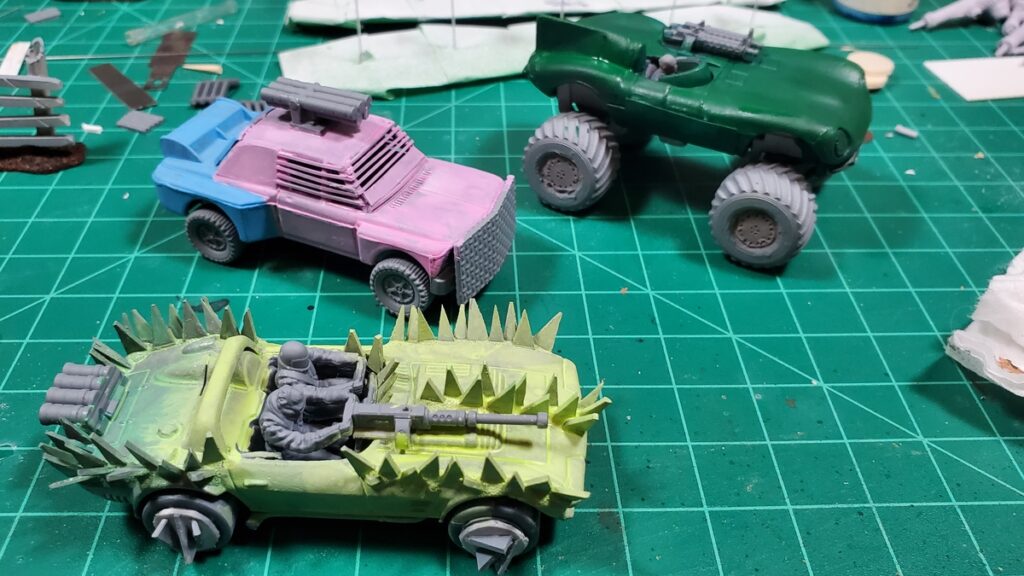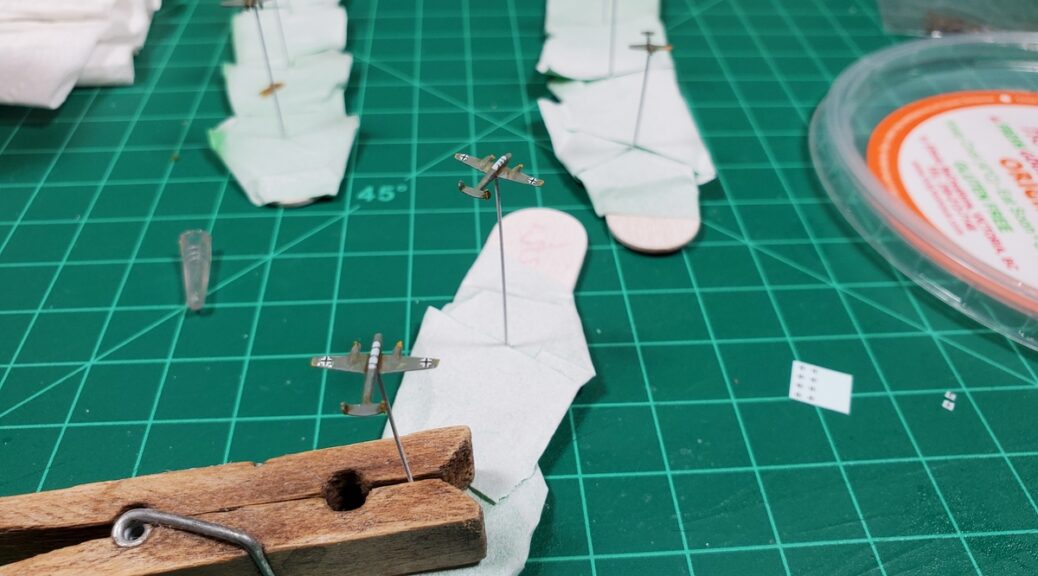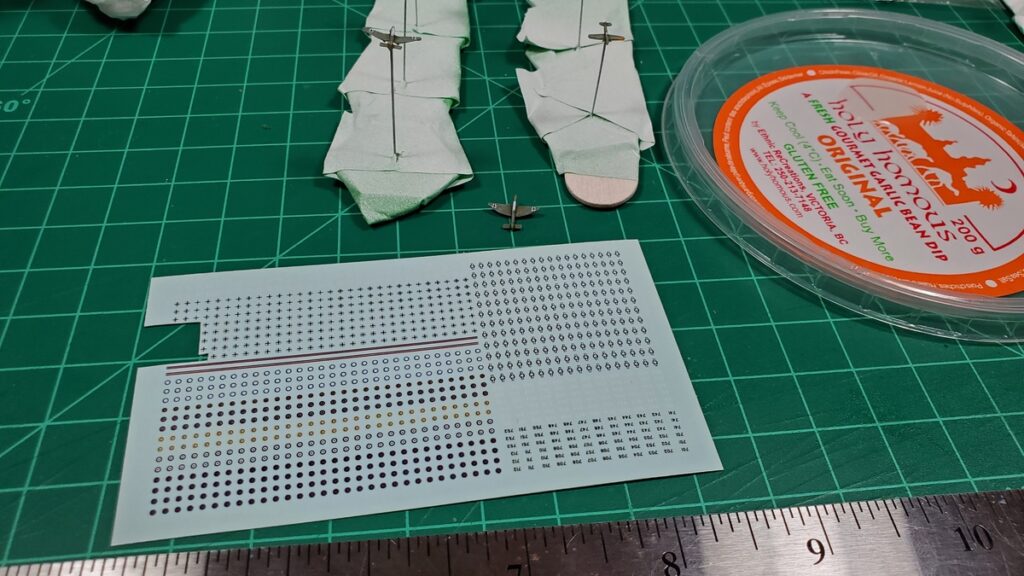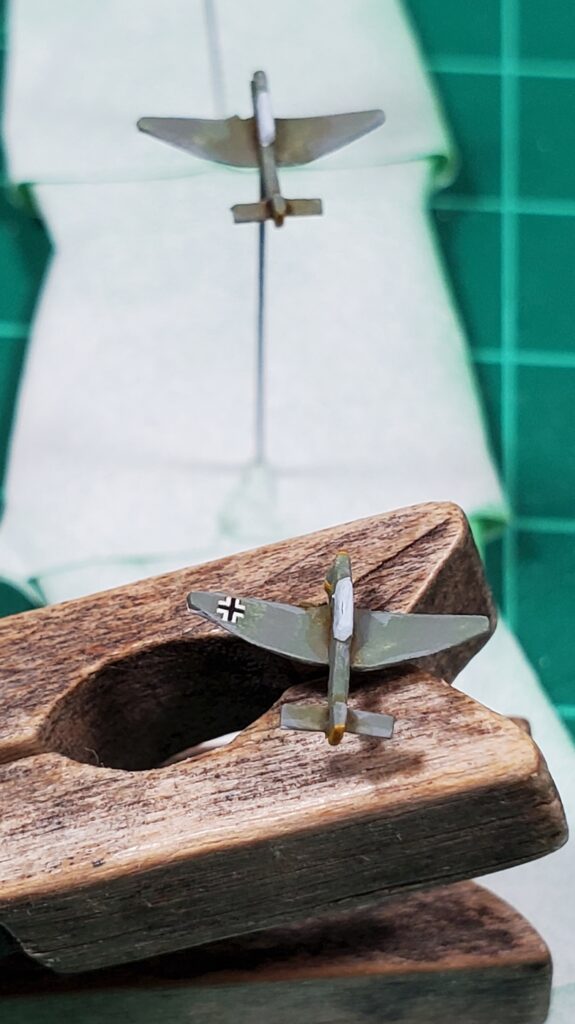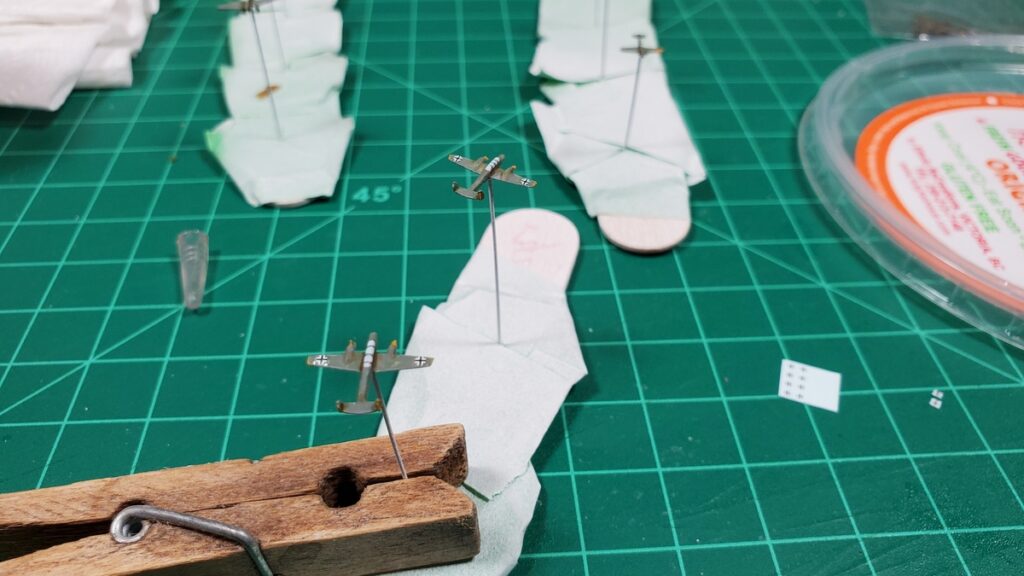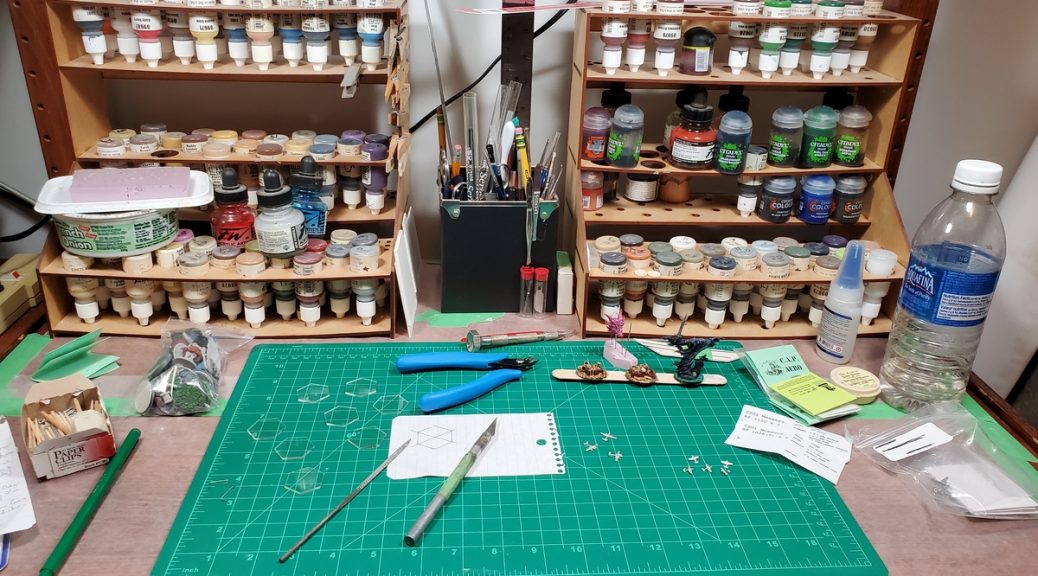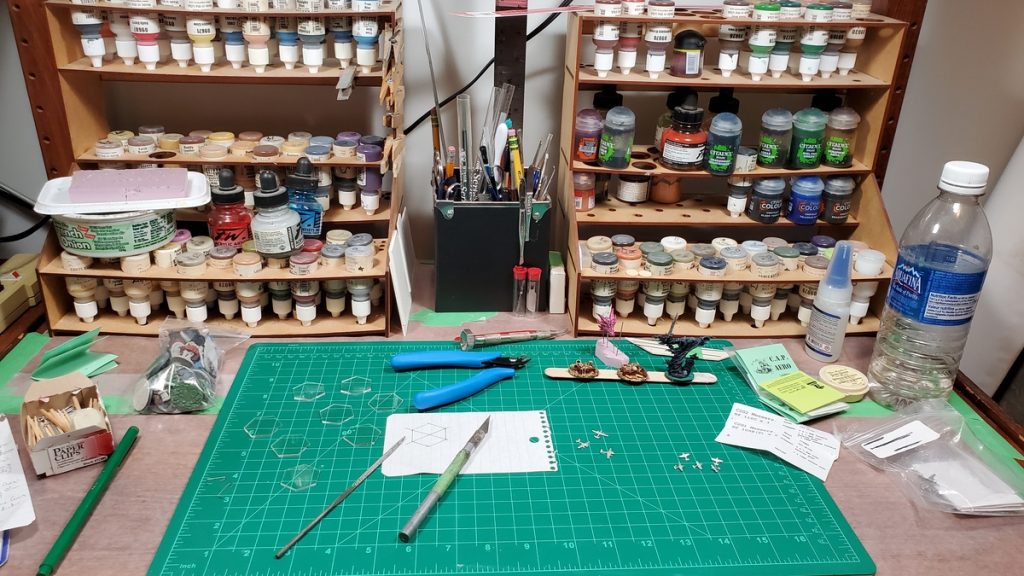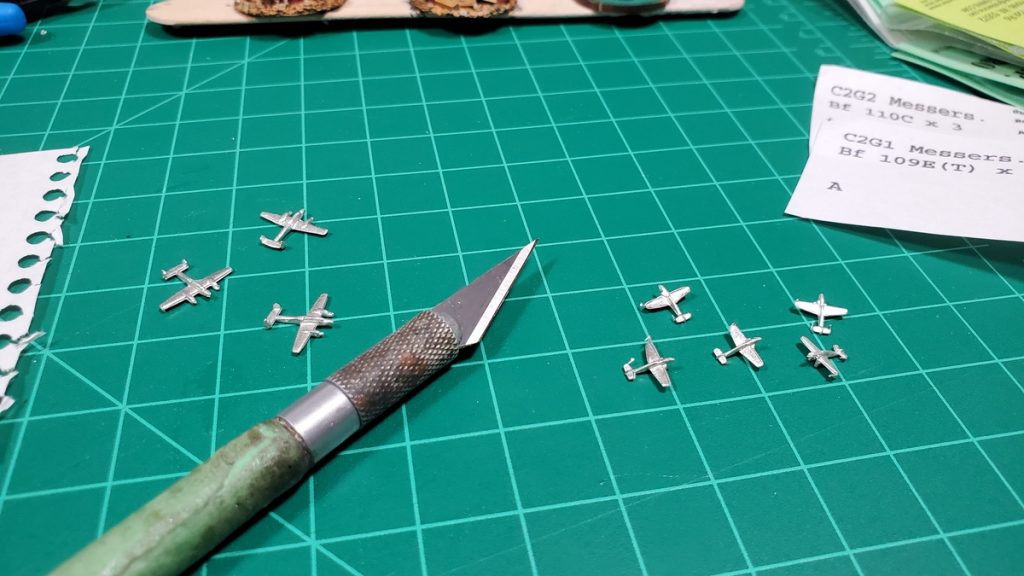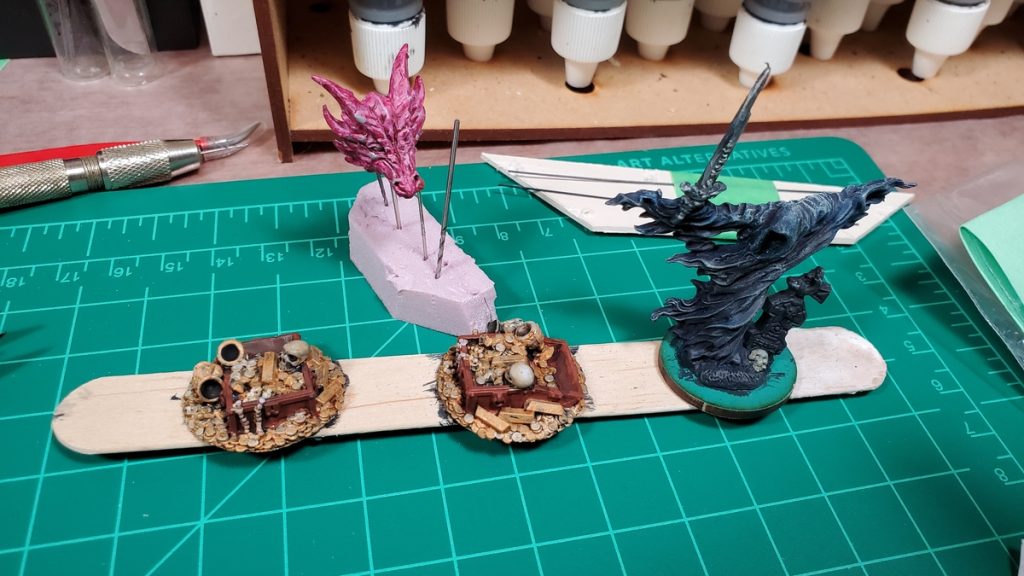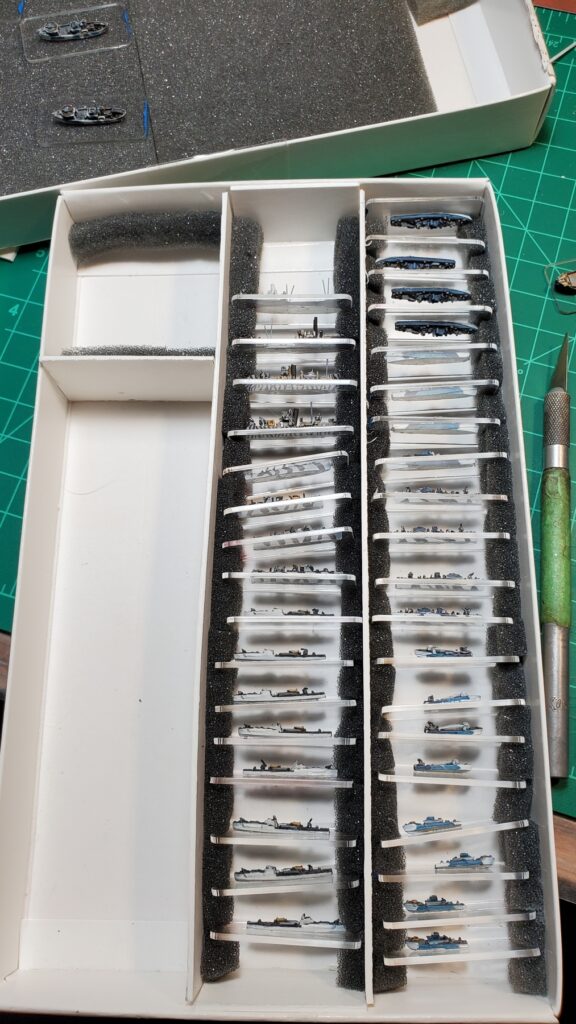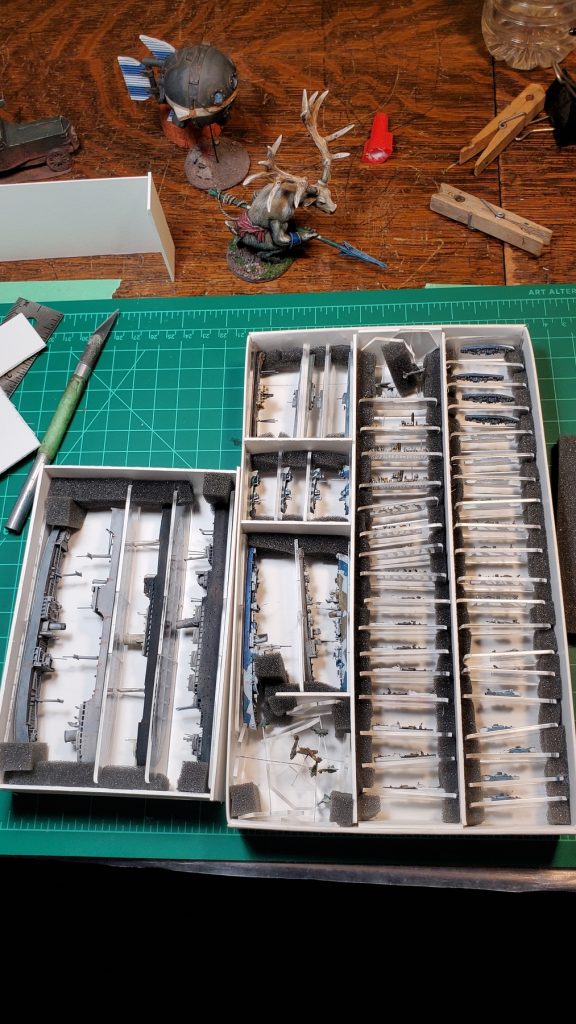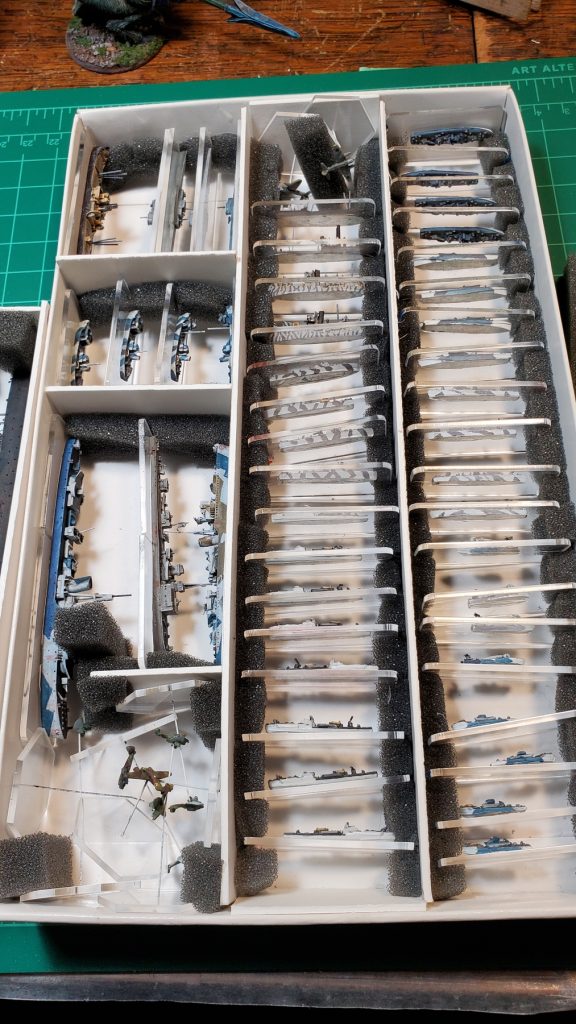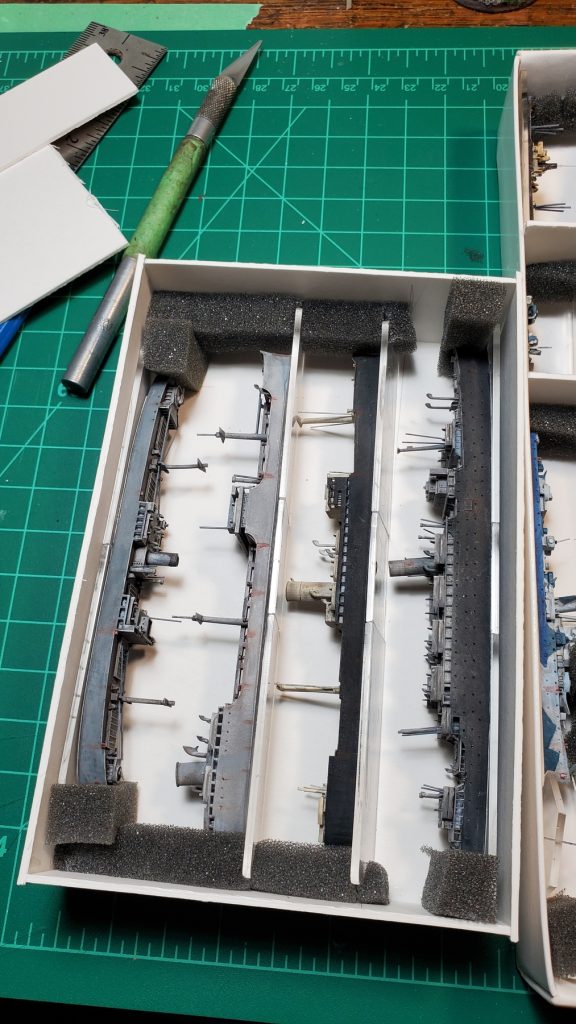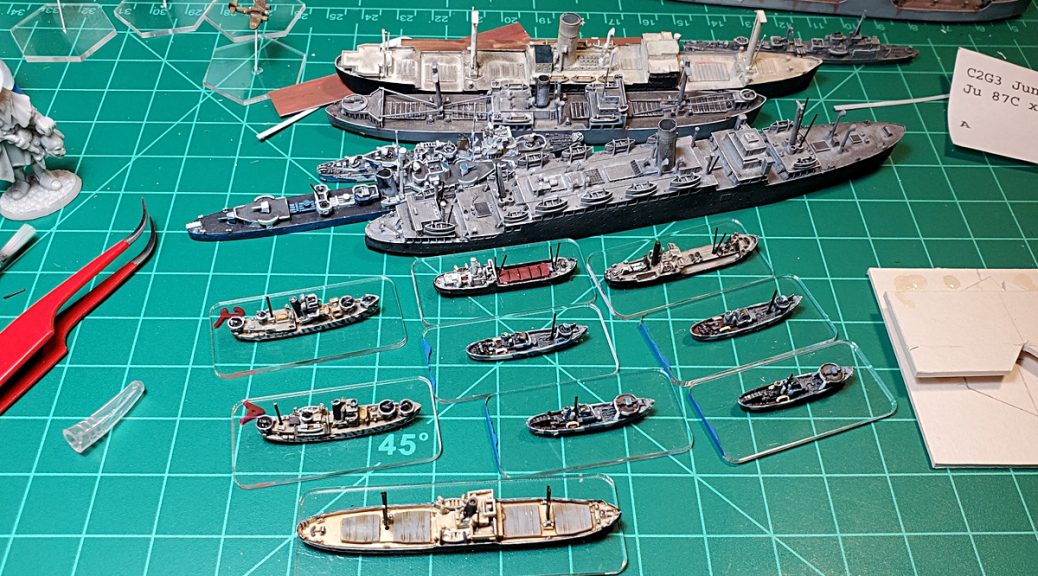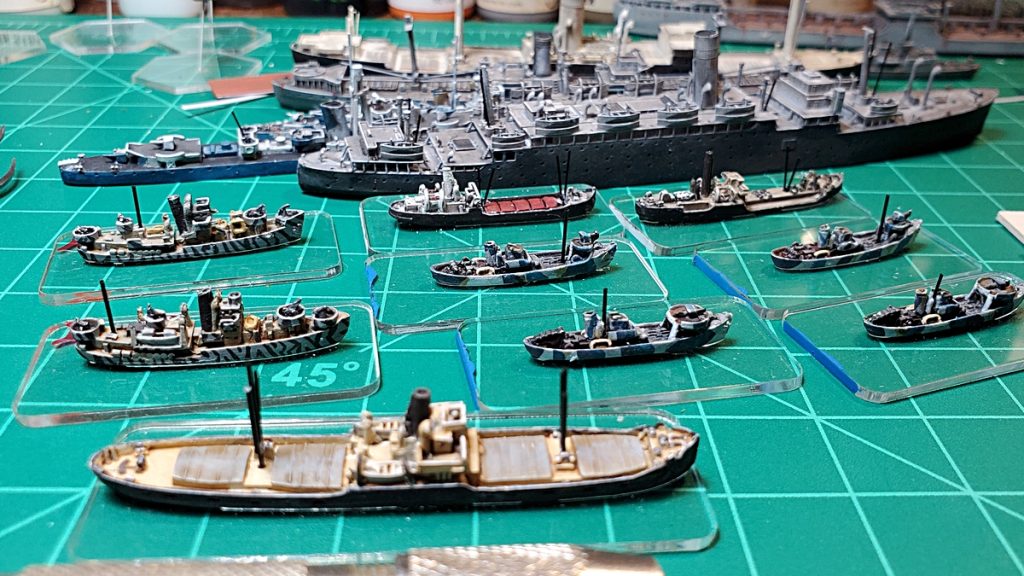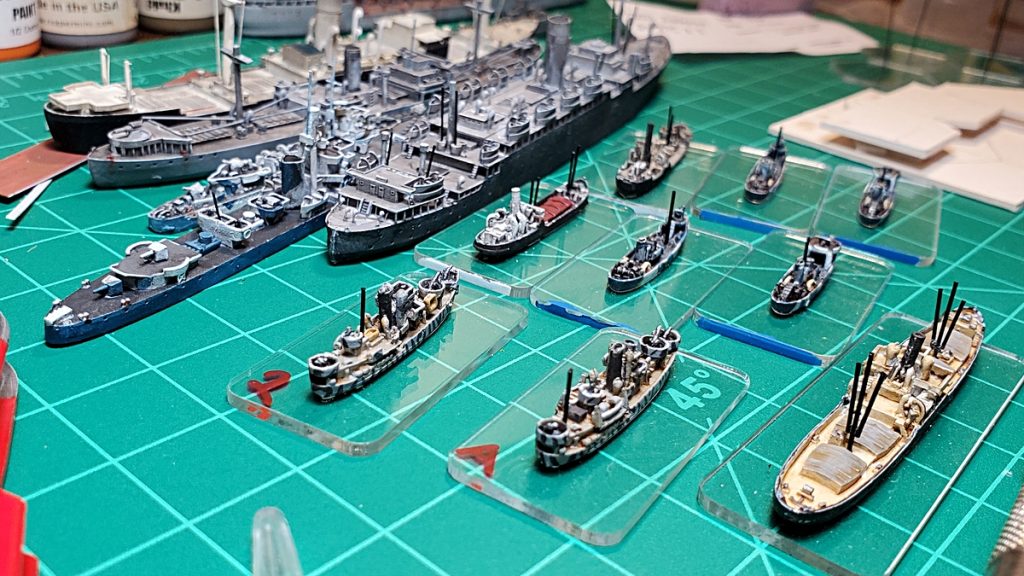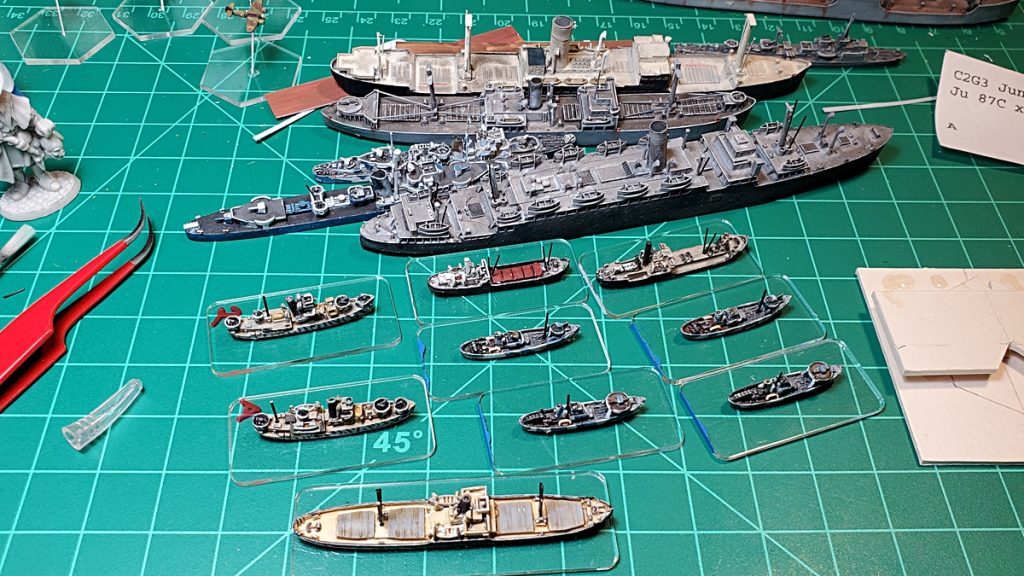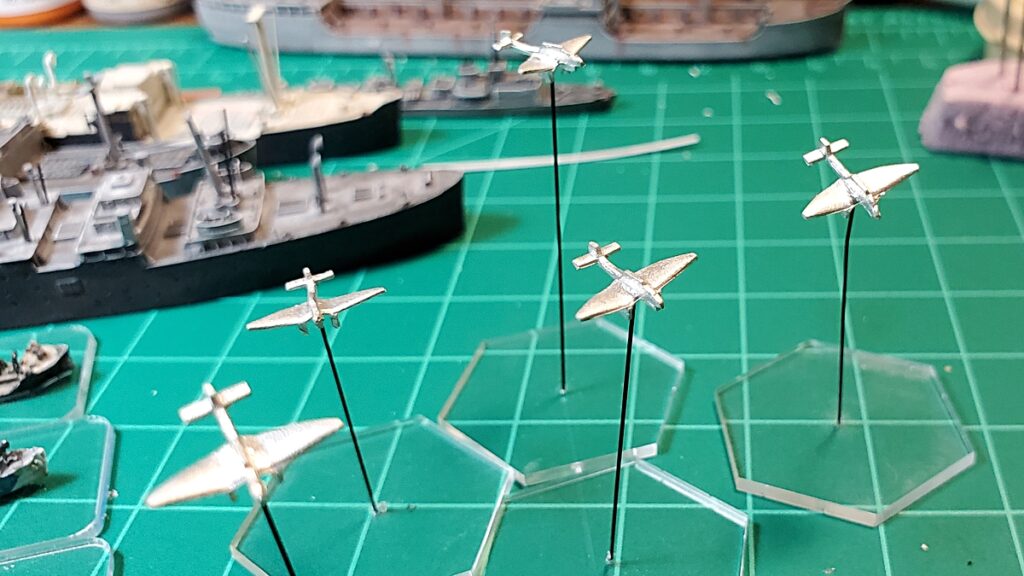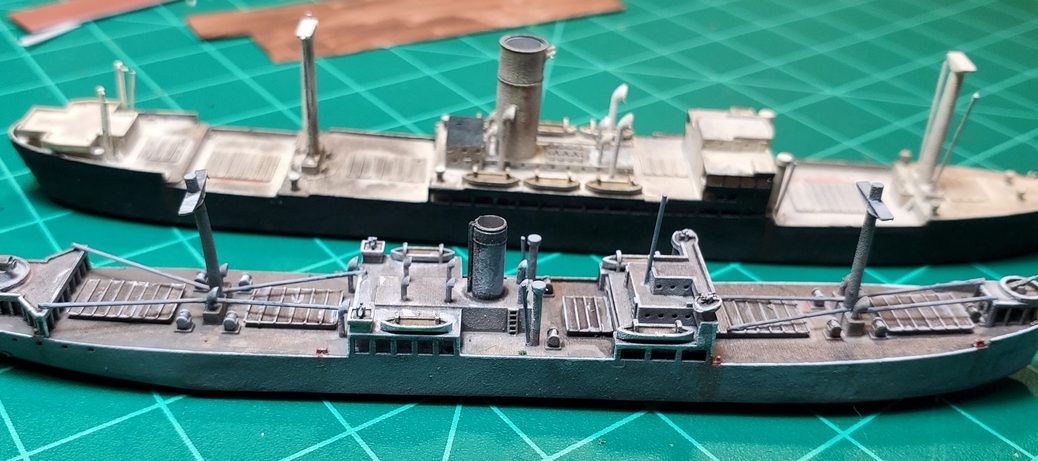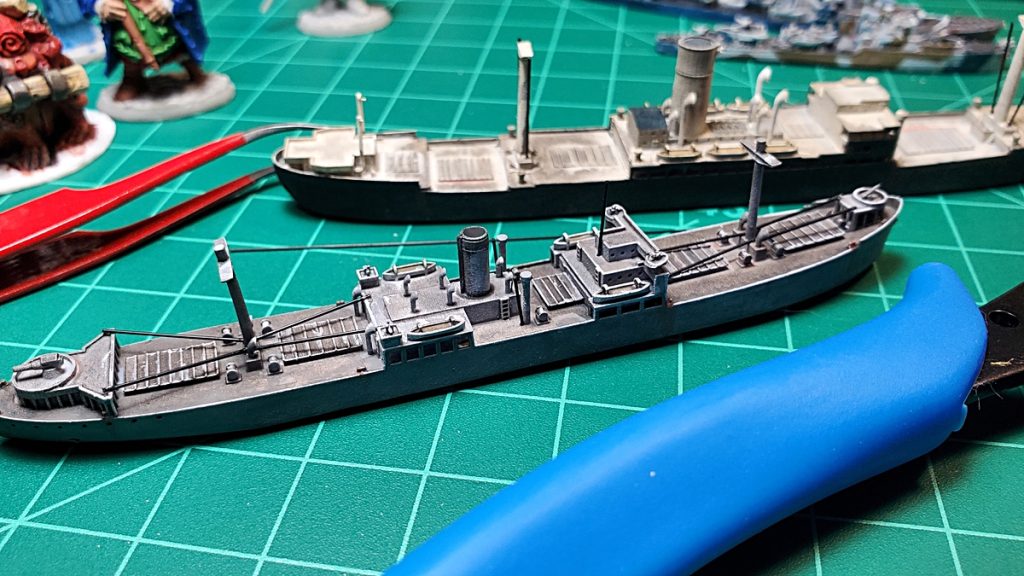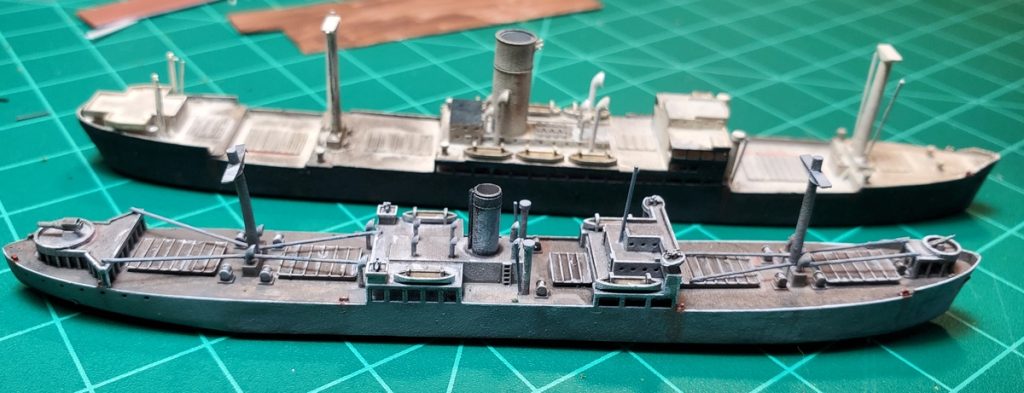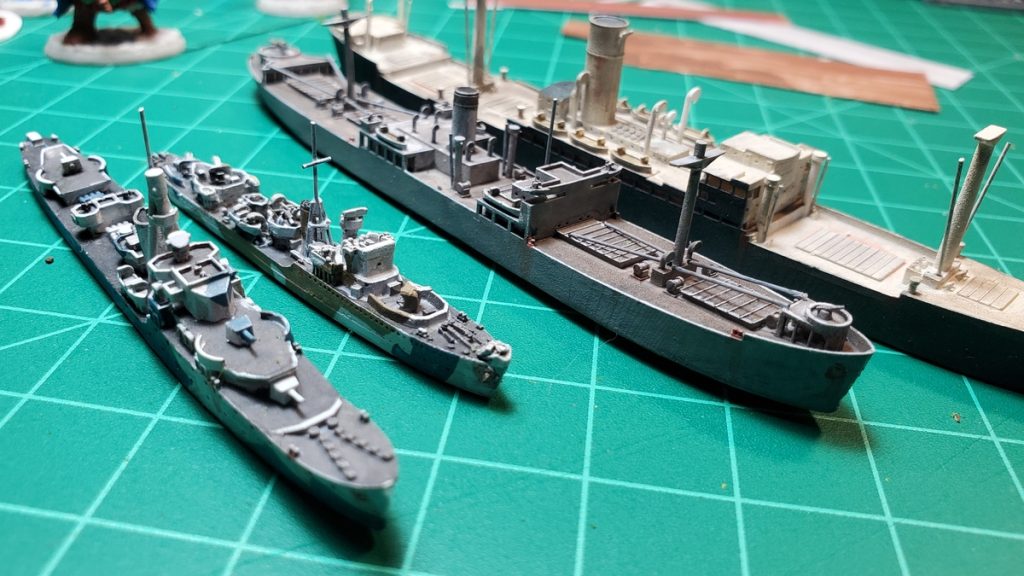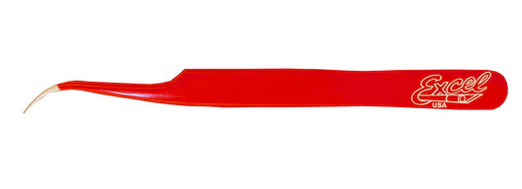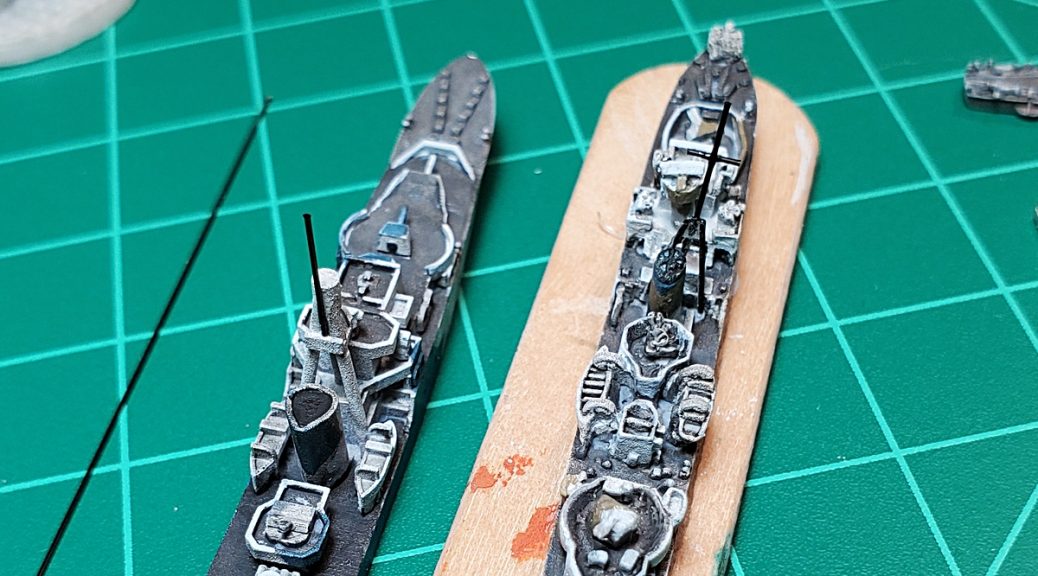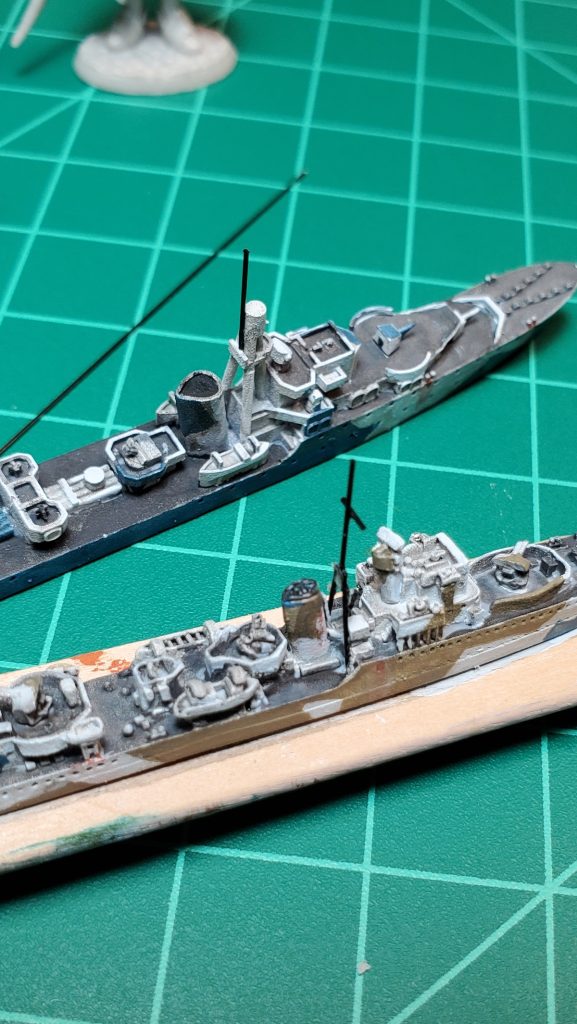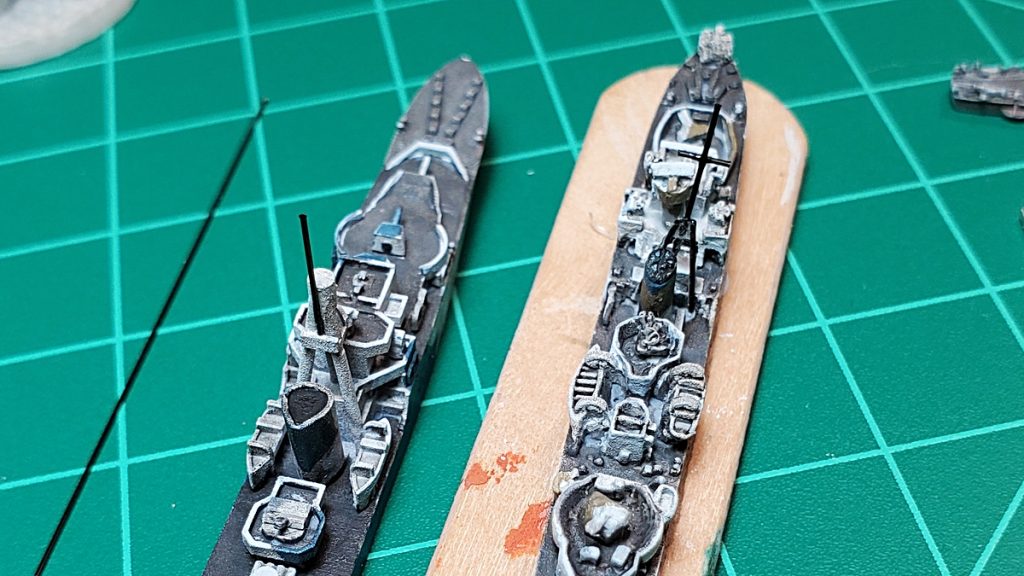My first gaming weekend since 2019 has come and gone and it was good. And as is often the case, I took far too few photos, including exactly none during my own game!
Friday evening Corey ran the sci-fi co-op game based on Sellswords he’s mentioned here a few times, while I played a mid-war What a Tanker game and traded my Sherman for a MkIV panzer.
Saturday morning I got a sturdy crew of Norsemen wiped out to a man by Saxons who were somewhat offended that we’d looted and burned the local monastery.
Saturday afternoon I ran a Coastal Patrol game, four German schnellboote attacking a British coastal convoy defended by a Hunt-class Destroyer Escort and a couple of plucky trawlers. The Hunt crippled one of the S-boats but then got shattered by a pair of torpedoes, and the big ocean-going freighter the Brits where shepherding down the coast also ate a pair of German torps before the S-boats roared off into the night.
Saturday evening we wound up doing a scratch game of Gaslands for eight players, a gloriously chaotic Death Race with lots of wrecks and some amazing driving – both amazingly bad and amazingly good!
Sunday morning I defended the shores of England from the German’s Operation Sealion, which was interesting (I’m not the biggest fan of Bolt Action, it’s a very cartoony rule set…), and then because we had time to kill before we headed off to the ferry, we ran another Gaslands game, this time a Flag Tag game for six players. Explosions, mayhem, and lunatic driving ensued!
I think I have a few photos on my phone, will pull them out. It’s been a weird and complicated week since then, hence the delay in this after-action post!
UPDATE: Corey has added some pictures here

